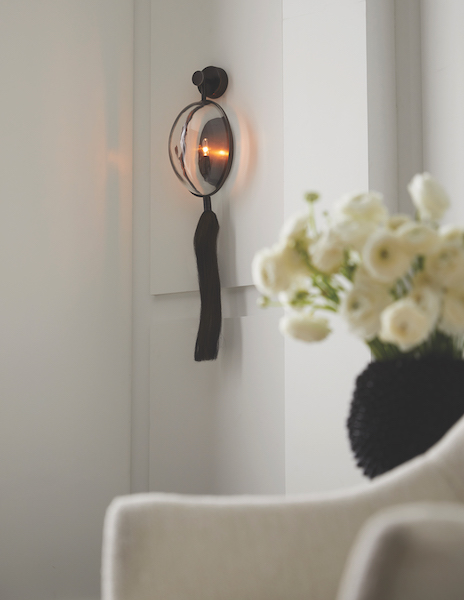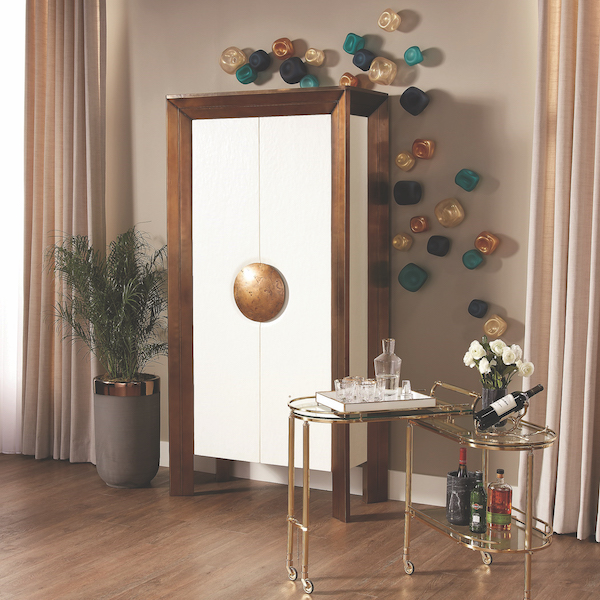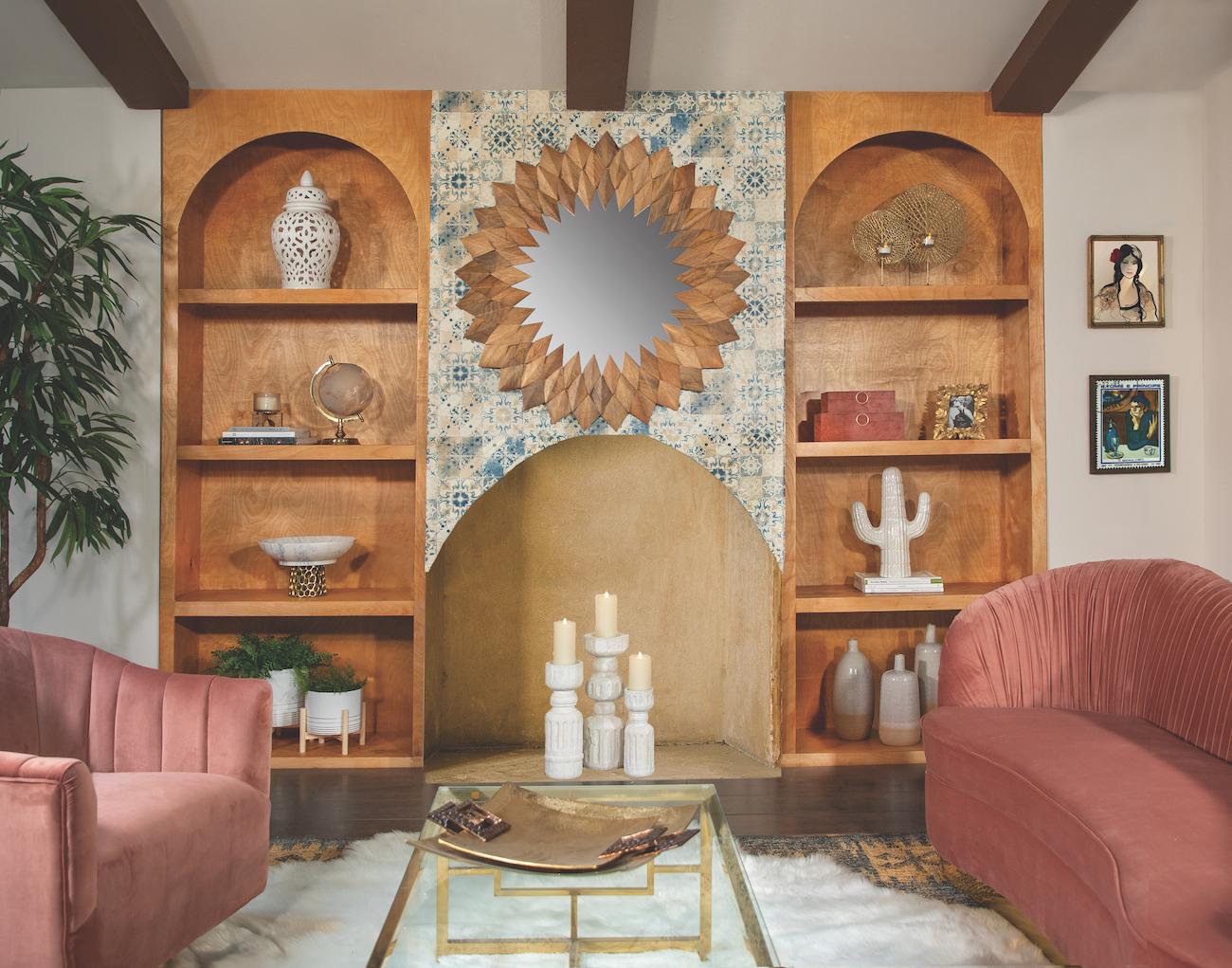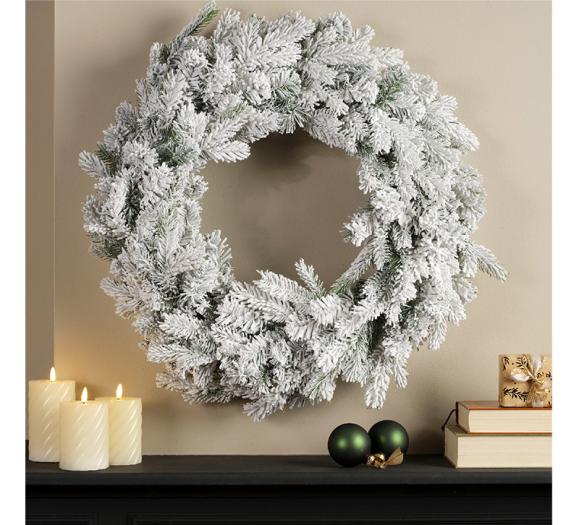Adorning the walls of a space can be a daunting task. Today’s home decor and lighting manufacturers offer a wide array of decorative wall objects that vary in size, materials and textures, and determining the placement of these pieces is often a balancing act.
“Walls are a blank canvas, craving dimension and texture that our decorative wall decor, sconces and mirrors offer,” says Barb Fuller, Vice President of Marketing for Arteriors. “While flat wall art can be a beautiful element in a space, selecting something with materiality and shape adds texture and soul to a room’s decor.”

Arteriors offers a full range of wall decor from mirrors to sconces to decorative wall hangings in a range of aesthetics. When it comes to materials, Fuller says Arteriors is seeing an increased interest in natural materials. Rattan and wood, which have long been popular in the company’s furniture category, are making their way to the walls.
“These products resonate from a textural standpoint, they are more visually appealing than your standard flat wall art pieces,” she says. “Everyone is still at home, still unable to travel, so they are looking to decor to fulfill that missed feeling of being outside and in nature. Using wall decor that has a natural wood finish or had a botanical style helps bring the outside in.”
But don’t discount traditional framed wall art’s ability to add the texture and visual interest clients and customers might be looking for, says Gayle Harismowich, Art Director for Celadon Art.
“Visual texture is our perception of what an actual texture might feel like,” she says. “This is based on our memories of a similar tactile experience we might have had. Capturing a sense of texture through framed artwork can be achieved in various ways.” These include adding actual three-dimensional objects to a print, and using hand-applied gilding to add texture through the manipulation of light and shadow.

Layering is another important element of incorporating framed art for a dimensional look, both within the art piece itself and in how the art is styled with other decor.
“Visible layering in a framed piece of art is also a way of bringing space continuity,” Harismowich says. “In a monochromatic color scheme which allows similar colours to come together, different textures can be incorporated to add contrast and contribute to a sense of harmony.” She also says that including a variety of types of wall decor in a space with a common theme can help enhance visual interest while maintaining a cohesive look.
Sagebrook Home offers a variety of wall decor including mirrors, wall art, clocks, wall flowers, hangings and wall storage. The company’s wall shelving can serve multiple purposes, adding the visual appeal of wall decor while also having spatial advantages.
“Using wall storage and shelving allows you to create more space within a room,” says Justin Kachan, CEO of Sagebrook. “This can be a great tip for smaller rooms that are multi-purposes spaces. Along with extended walls containing minimal breaks to help break up a large room.” Kachan says his customers typically style Sagebrook wall shelves with vases and small decorative accents, sticking to a monochromatic palette with gold accents.
Mirrors can also affect the spatial perception of a room.
“The beauty of adding a mirror to any space is its ability to open up a room,” Kachan says. “A mirror is almost like an ever-changing moving image in a room that commands attention when framed in such a way.”
At Global Views, the company’s wall decor offerings include wall art, sculptural objects, shelves, and candle sconces, with products made of glass, metal, wood and agate, among other materials. Some of the company’s framed wall decor also has the visual texture element, such as the Kantha Abstract Design wall art, made from recycled saris. Global Views is constantly challenging its factories and their team’s own creativity to come up with new and different materials to use in creating alternative wall decor pieces, says David Gebhart, the company’s owner.

The versatility of these unique pieces allows many of them to be hung vertically or horizontally, and many come in multiple sizes, helping them fit any application.
“You can do the installation of these pieces in whatever environment you want — a living room, a dining room, over the head of the bed,” Gebhart says. “They’ll really create a lot of impact in the room settings where you place them. But if you get tired of these for any reason in the first go round, you can always pick them up and move them very easily to another part of your home and they’ll react completely differently in a different environment.”
Wall sconces also play a role in designing above the chair rail, says Arteriors’ Fuller.
“Wall sconces are a supporting player in the overall design story of a space,” she says. “When they’re added in the right moment — be it a powder room for a soft, intimate glow, or above a bedroom nightstand, the lighting ensemble is complete and takes the aesthetic of the space to another level. While their light source is intended to layer, it’s not to say they can’t stand out.” But in a space like a hallway, where multiple fixtures might be used, she suggests opting for a more understated sconce to not overwhelm the space.
Filling the Walls
As the COVID-19 pandemic hit the U.S. last March and April, Global Views filmed videos for their website of some of their three-dimensional wall decor pieces, including a new set of crosshatched glass wall discs, showing them from every angle and in different configurations. Many of the videos include narration and outline instructions for mounting, attempting to answer any questions that might arise or deter a customer from purchasing the pieces without seeing them in person. This approach worked. The wall discs sold out within a matter of months after releasing the videos.
The same techniques can be applied to a retail environment, where wall space might be limited, Gebhart says. Instead of crowding the walls with every product available, he suggests displaying a sample and creating a printed catalog of sorts that shows the customer what’s possible. He used the crosshatched discs as an example. The Global Views website shows 24 sets of discs on a wall, which would be too much for the average retail space.
“If you simply put one set of three on the wall, and then you do a reproduction of the image that shows 24 sets, then you can lead your customer to understand that there’s a whole lot that can be done,” he says. “Especially if you have an interior designer involved in the project, or if it’s in a retail store environment, a very creative team of visual merchandisers who can explain to customers how they can make that personalized in their homes.”
Fuller agrees, noting that retailers should have a strong pulse on their clientele and understand what their typical designer or retail customer is looking for and go from there.
“Keeping like aesthetics together will help shoppers hone in on what resonates with their design,” she says. “Grouping products by theme or material will define the wall space, allowing for visual cues for designers and customers. Calling out new introductions can also be helpful, so that customers can easily see what is new.”
Because the options with this type of wall decor are seemingly endless, Gebhart highlighted the importance of working with a professional to arrange them in a way that makes sense.
“It’s always kind of an artistic endeavor,” he says. “It’s a little bit like arranging flowers in a lot of ways. Some people have a knack for arranging flowers, but if you don’t, then you need to find someone to help you out with the installation who does have a knack for that and who can really do something artistically beautiful with these pieces.”







